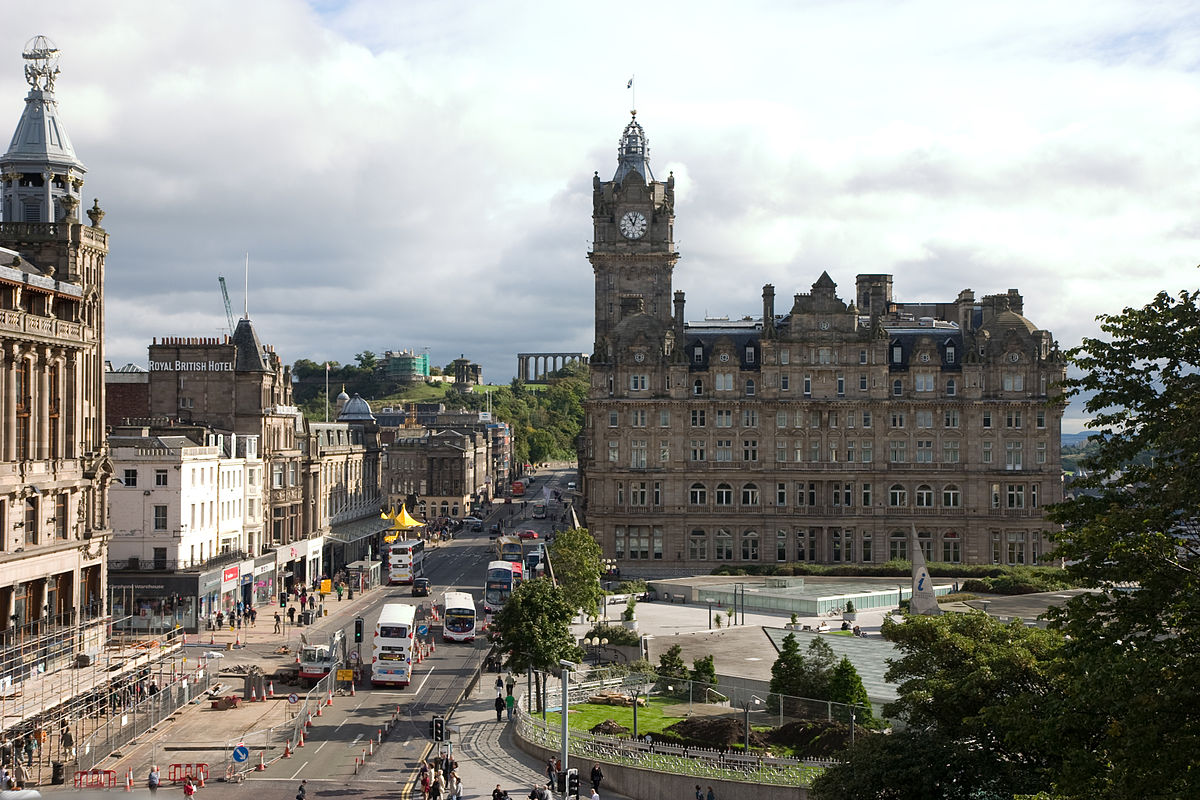
Princes Street, Edinburgh
Photography: Tom Page, Wikimedia Commons (BY-SA)
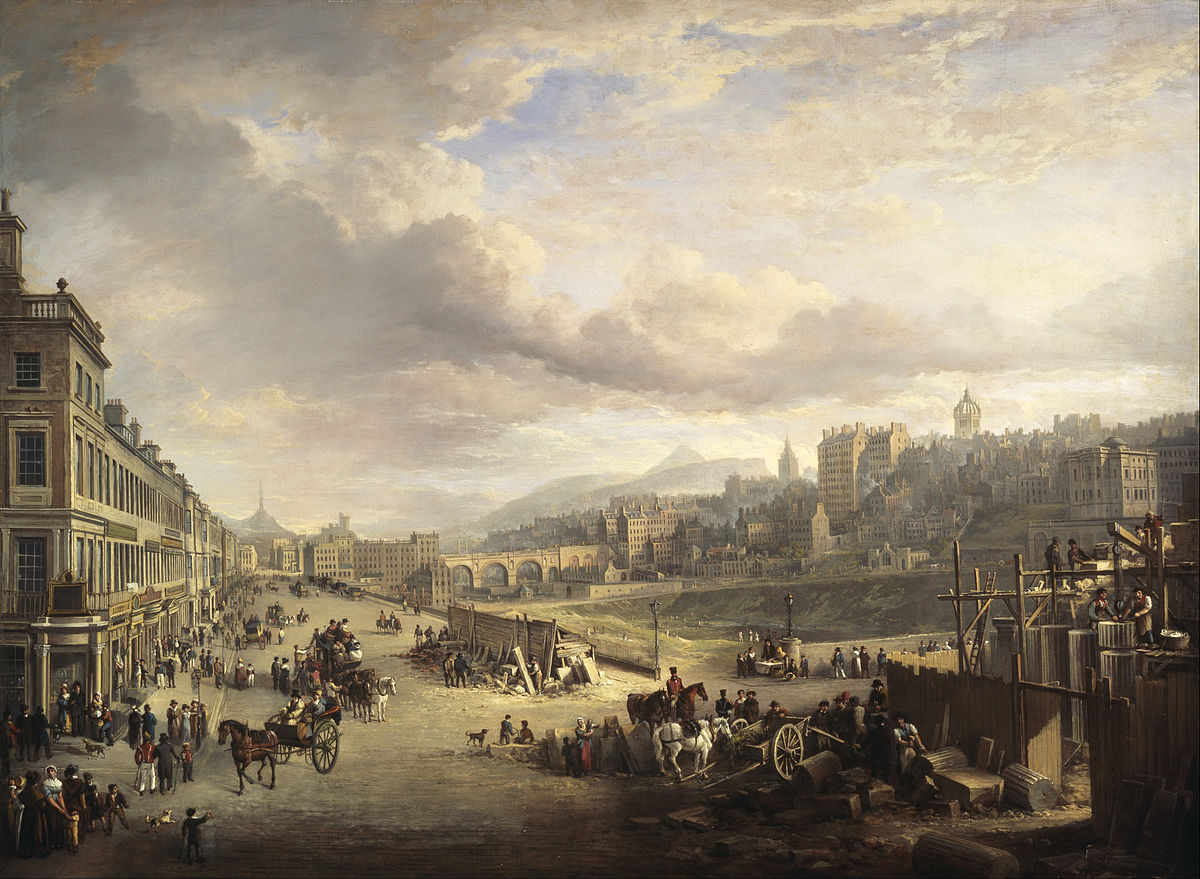
Alexander Nasmith, Prines Street with Commencement of the Building of the Royal Institution, 1825
Edinburgh, Scottish National Gallery
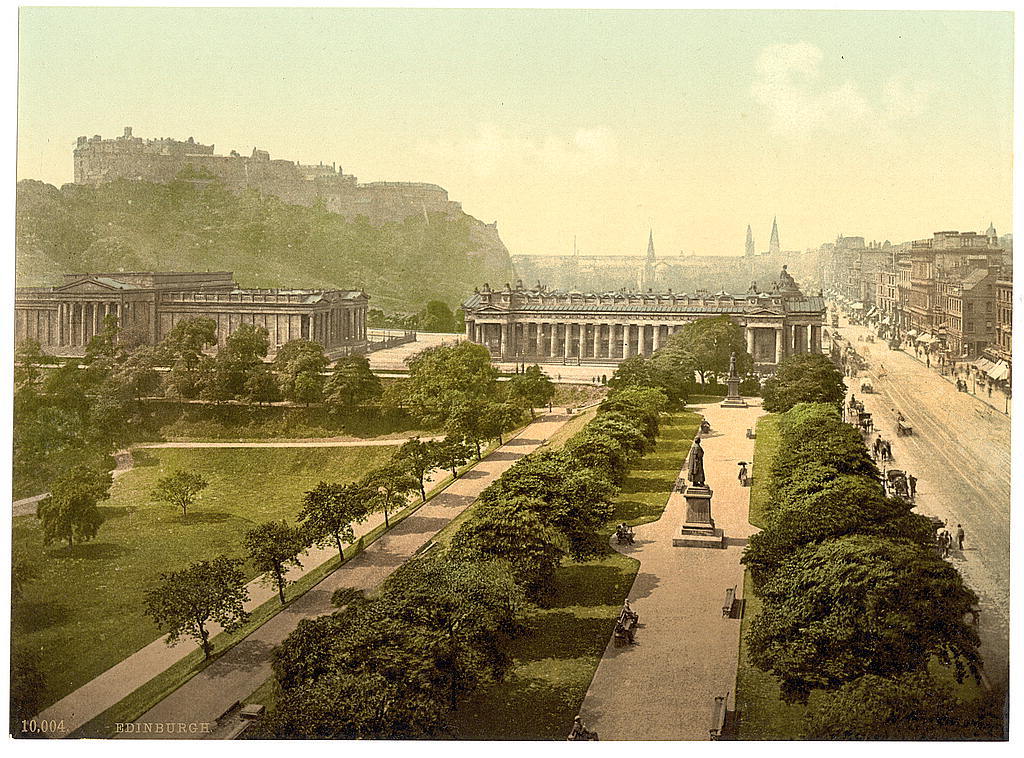
Princess Street (i.e. Princes Street) and castle from Scott's Monument, Edinburgh, Scotland 1890
Photography: no attribution, public domain
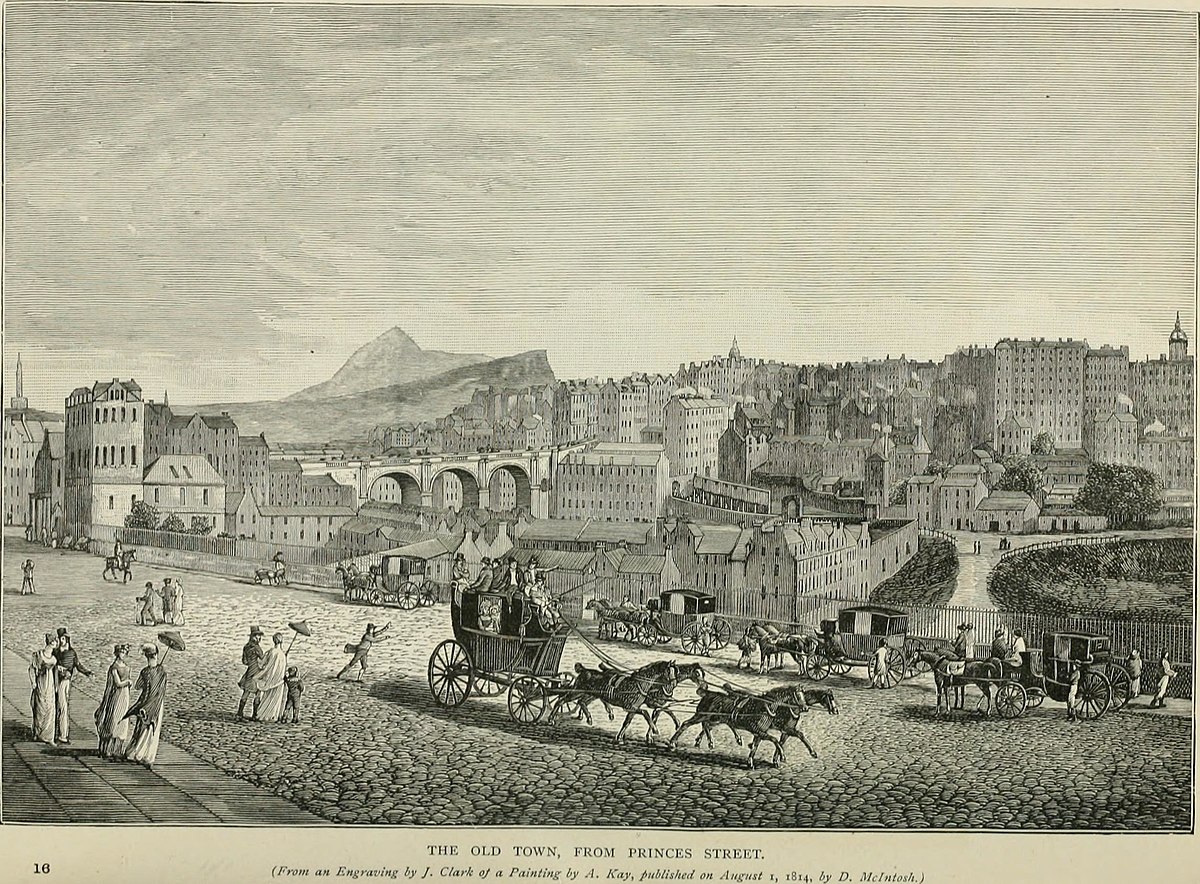
View of the Castle from Princes Street
From Cassel's Old and new Edinburgh, its history, its people and its places, 1881
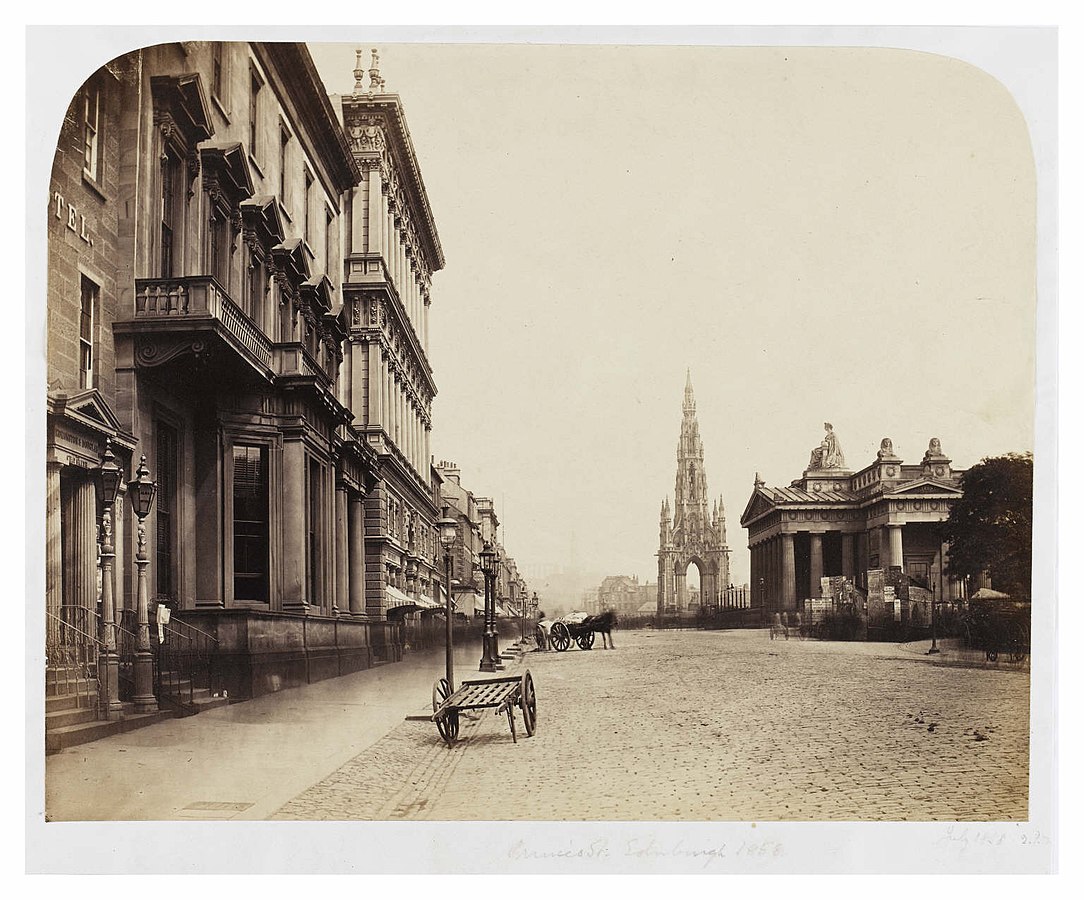
Princes Street Edinburgh
By William Donaldson Clark, 1858, Wikimedia, public domain
Princes Street
We will complete our walk by progressing westwards along Princes Street, now considered Edinburgh’s main street. Number 2 Princes Street is General Register House, built according to a design by Robert Adam (see section 12 of Old Town Walk), whose style was again heavily influenced by Greek architecture. Construction began in 1774 and it was indeed the first public building of Edinburgh’s New Town. It is probably the oldest archive of its kind in the world which still remains dedicated to this purpose today.
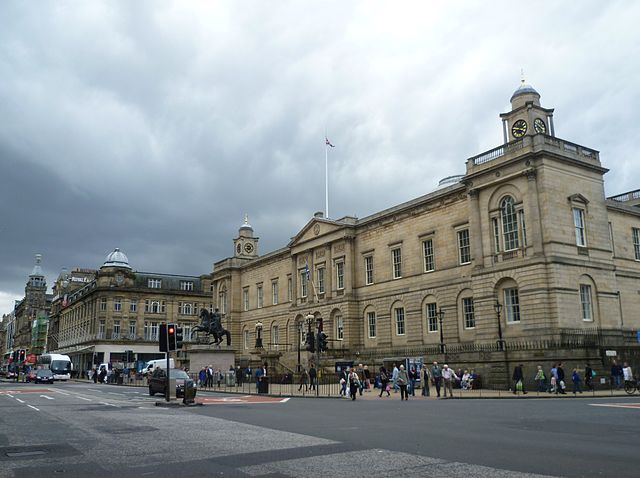
General Register House
Photography: Kim Traynor, Wikimedia Commons (BY-SA)
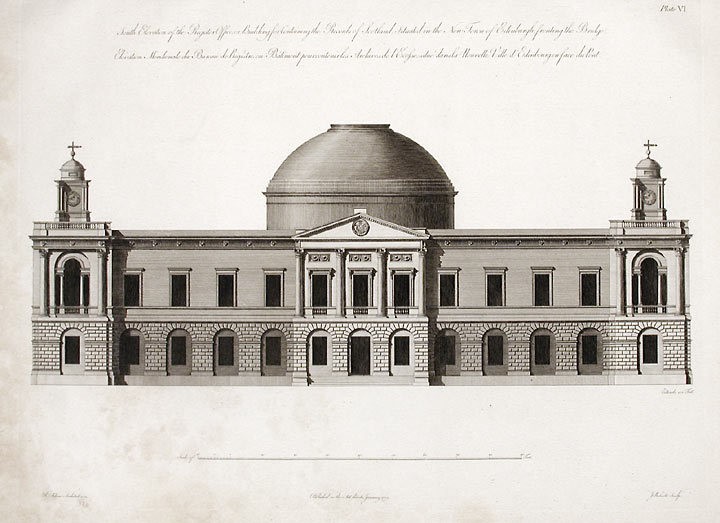
Original elevation of General Register House at 2 Princes Street
Adam Brothers Records Office, Edinburgh, 1775
Walk 320 metres eastwards on Princes Street and view the Walter Scott monument on the left.
After walking 320 meters along Princes Street you will reach the Walter Scott monument on your left. A competition was held for the design of this monument after Scott's death in 1832. The winner was a largely unknown joiner and draftsman, George Meikle Kemp, who adopted the pseudonym John Morvo (actually the medieval architect of Melrose Abbey) to offset his inexperience and minimal reputation. The monument holds 93 statues and heads, including characters from Scott’s books and Scottish writes, poets and historical figures. The statue of Scott and his dog located at the base of the monument was designed by Sir John Steell (1804 – 1891), whose works appear at multiple sites in Edinburgh, including at our next stop at the foot of the Mound.
Walk a further 300 metres eastwards on Princes Street to the foot of the Mound.
This statue, located on the right-hand side of the base of The Mound, just inside the entrance to Princes Street Gardens, represents the poet Allan Ramsay (see section 1 of Old Town Narrative) although Steell has given us a somewhat idealised version given that Ramsay was actually short of stature and fat in later life. Looking past the statue and upwards to the left of Edinburgh castle you may note Ramsay’s octagonal lodge which you visited during the Old Town Walk.
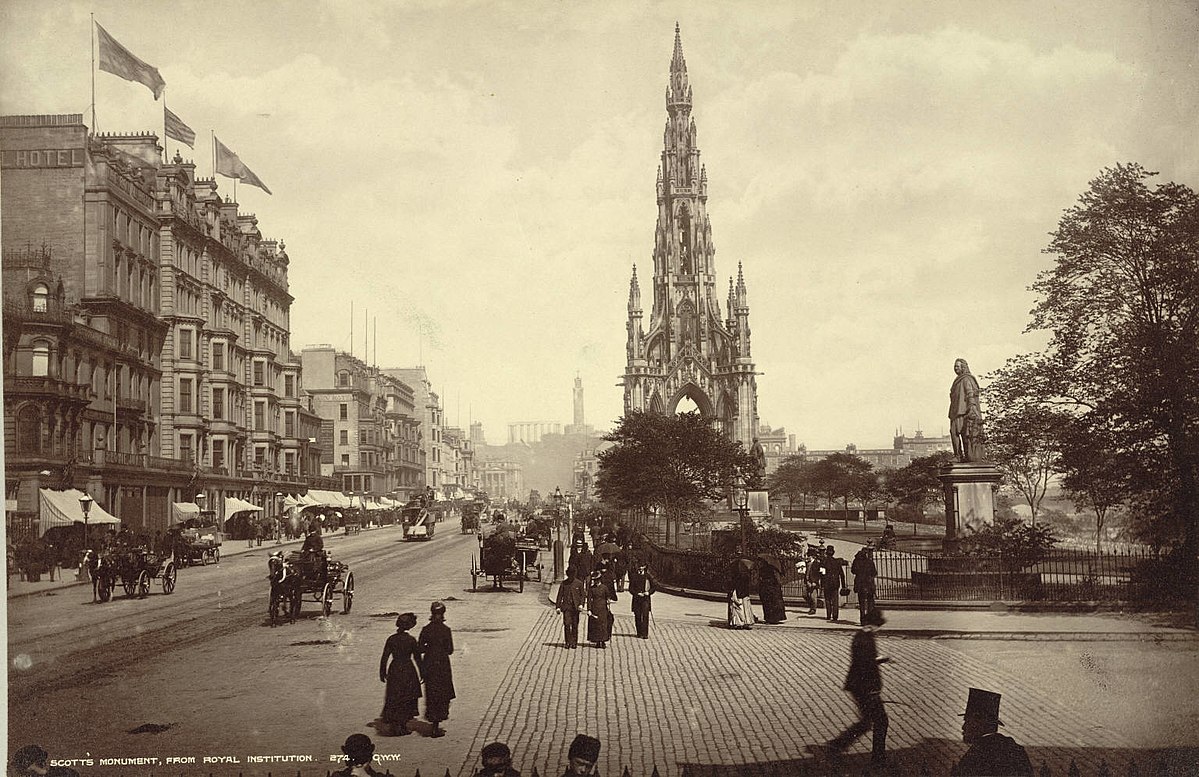
Sir Walter Scott's Monument from the Royal Institution
Photography: no attribution, Cornell University Library, public domain
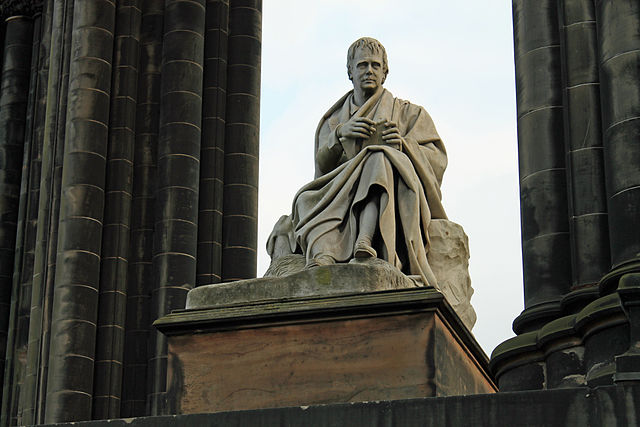
Name & Info
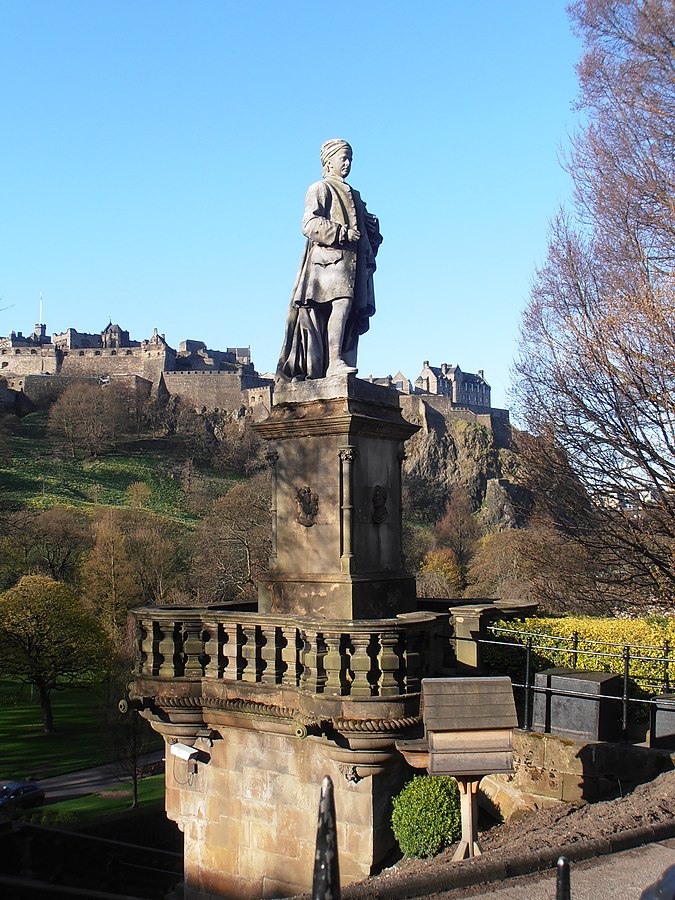
W Allan_Ramsay Statue by Sir John Steell, 1850
Photography: Ham, Wikimedia Commons (BY-SA)
On the left hand side of the base of The Mound you will see the Royal Scottish Academy, built by William Henry Playfair in 1822-6. Together with the adjacent National Gallery of Scotland immediately behind, their Greek inspired design contributed to Edinburgh’s image as the new "Athens of the North."
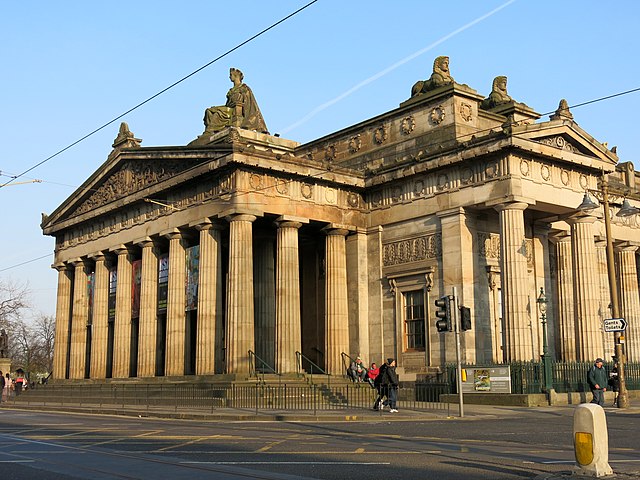
The Royal Scottish Academy, Edinburgh
Photography: Enric, Wikimedia Commons (BY-SA)
